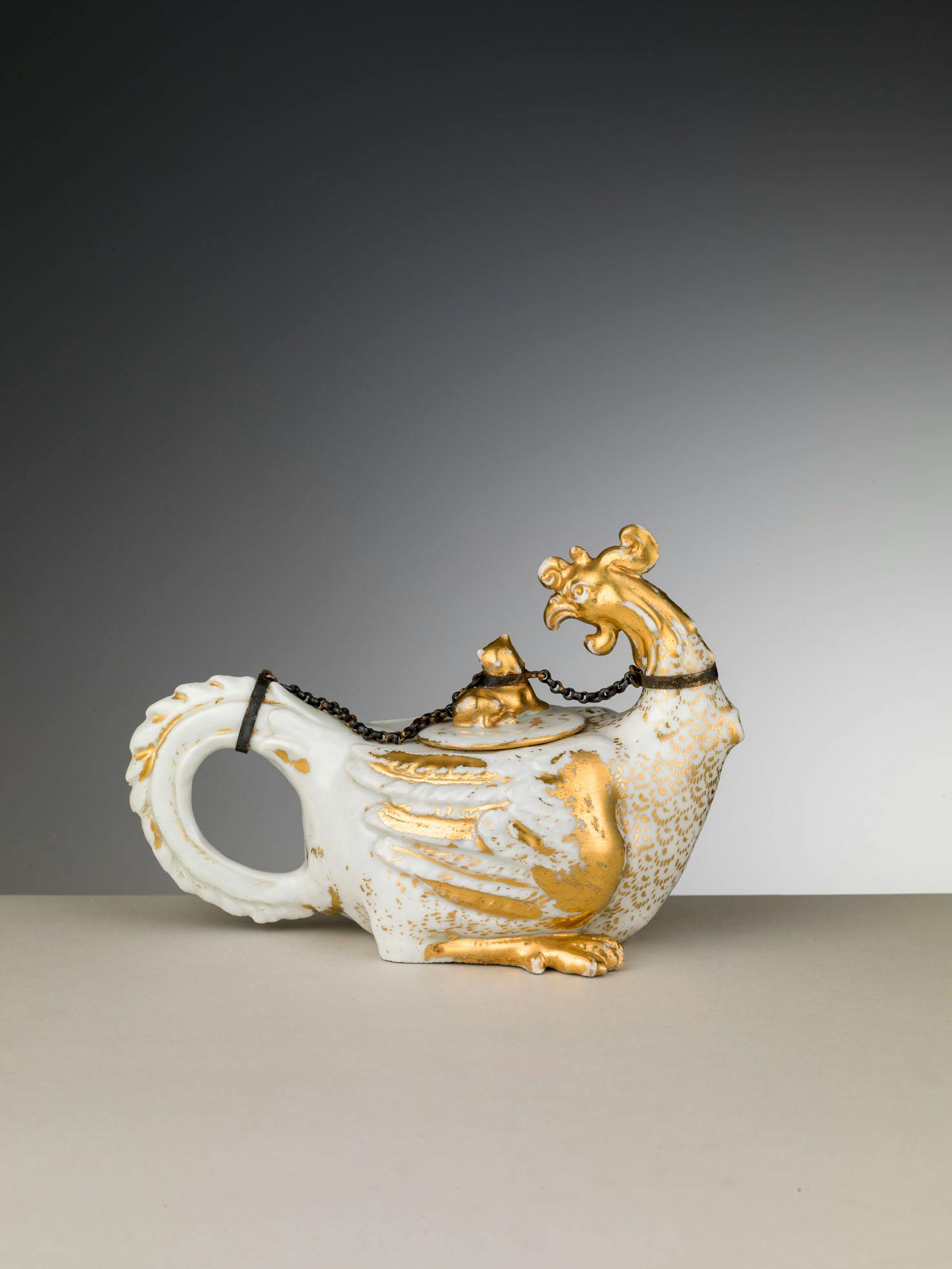Teapot in the shape of a fantasy animal
Manufactory in Meissen
This teapot with its bizarre shape is reminiscent of the Fenghuang, the "Chinese phoenix", although the subject depicted has been revisited in a Western key as suggested by the features, which mainly evoke those of a rooster. With its beak open, it is depicted about to hurl itself against an all-golden dog positioned on its back. The dog serves as the knob of the lid over the opening where the water for infusing the tea was added. The chain welded to the sides of the teapot is used to anchor the lid to the rest of the body while allowing it to be lifted in order to pour this precious beverage, whose preparation in the oriental culture was linked to a ceremony.
Beverages, spices, essences, fabrics and also porcelain came to the West From distant lands through the British East India Company, established in 1602. Porcelain, in particular, won over the courts of Europe, gaining popularity and eventually becoming an indicator of its owner’s social status.
The role played by this precious ceramic material did not go unnoticed, above all, by the Elector of Saxony, Augustus the Strong, who started his own production of porcelain, mainly for use as gifts, in an attempt to show the other kingdoms his power and to establish alliances with them. The Meissen Porcelain Manufactory, which he founded in 1710, took as its model the oriental porcelain of the Kangxi era, of which our teapot is an example. Two versions of the model are noted in the sales inventories of the factory between 1727 and 1728: porcelain and stoneware. It remained in production until 1735, when the chief caster Johann Joachim Kaendler made a substantial change to the design, rotating the animal’s head forward to use the mouth as a spout from which to pour the tea. Instead, in our version a metal spout was applied and the tea came out of the neck.
It is known from the documents on file that both Gian Gastone de' Medici and his sister Maria Luisa, Electress Palatine, had a rich collection of porcelain. A significant, if reduced, portion of this is still preserved in Palazzo Pitti, providing us with an important a legacy that offers us an insight into their taste. The teapot presented here is one example of this. It is thought to have been a gift from the wife of the Margrave of Baden, Sybilla Augusta von Sachsen Lauenburg to her brother-in-law Gian Gastone.
